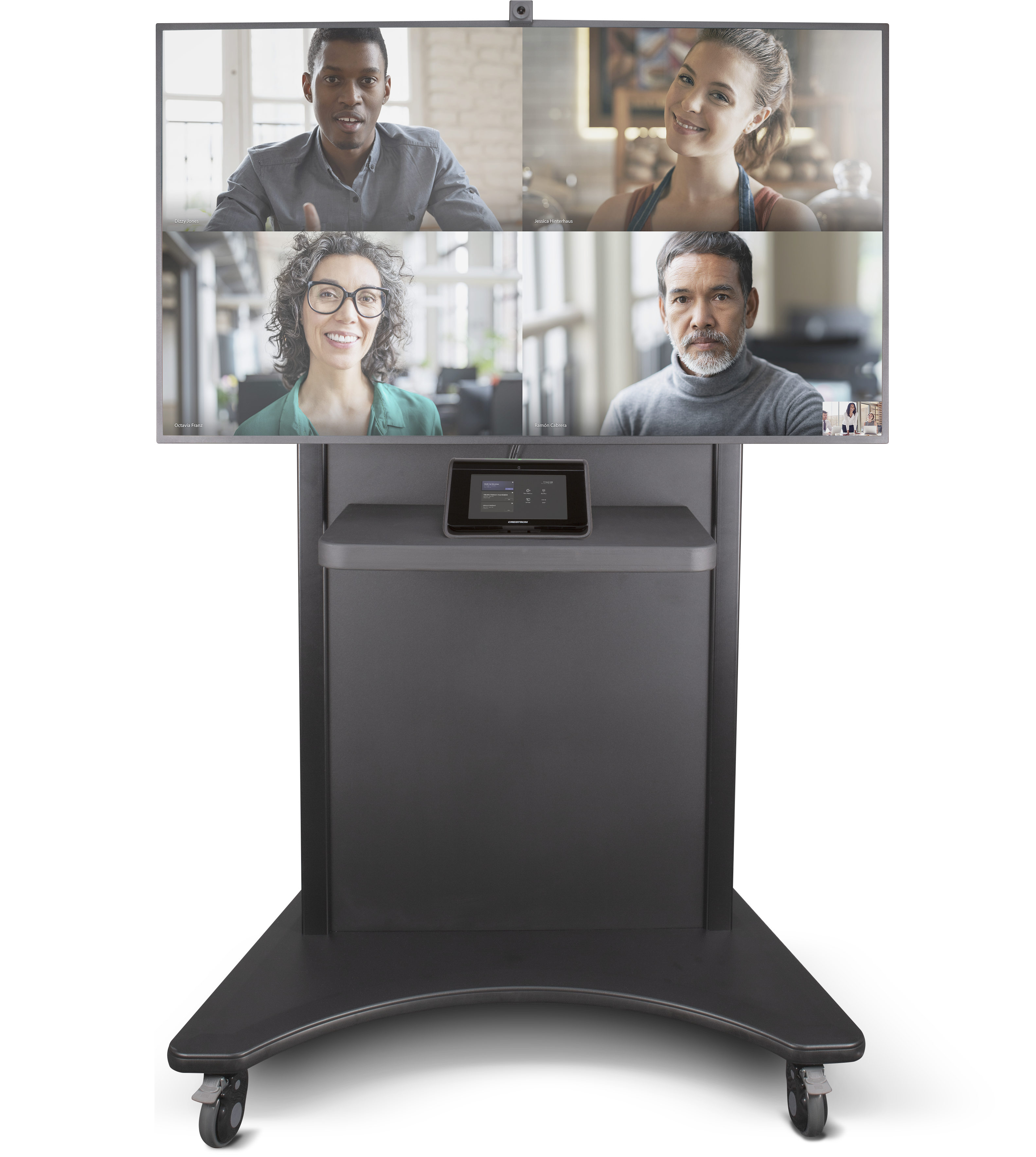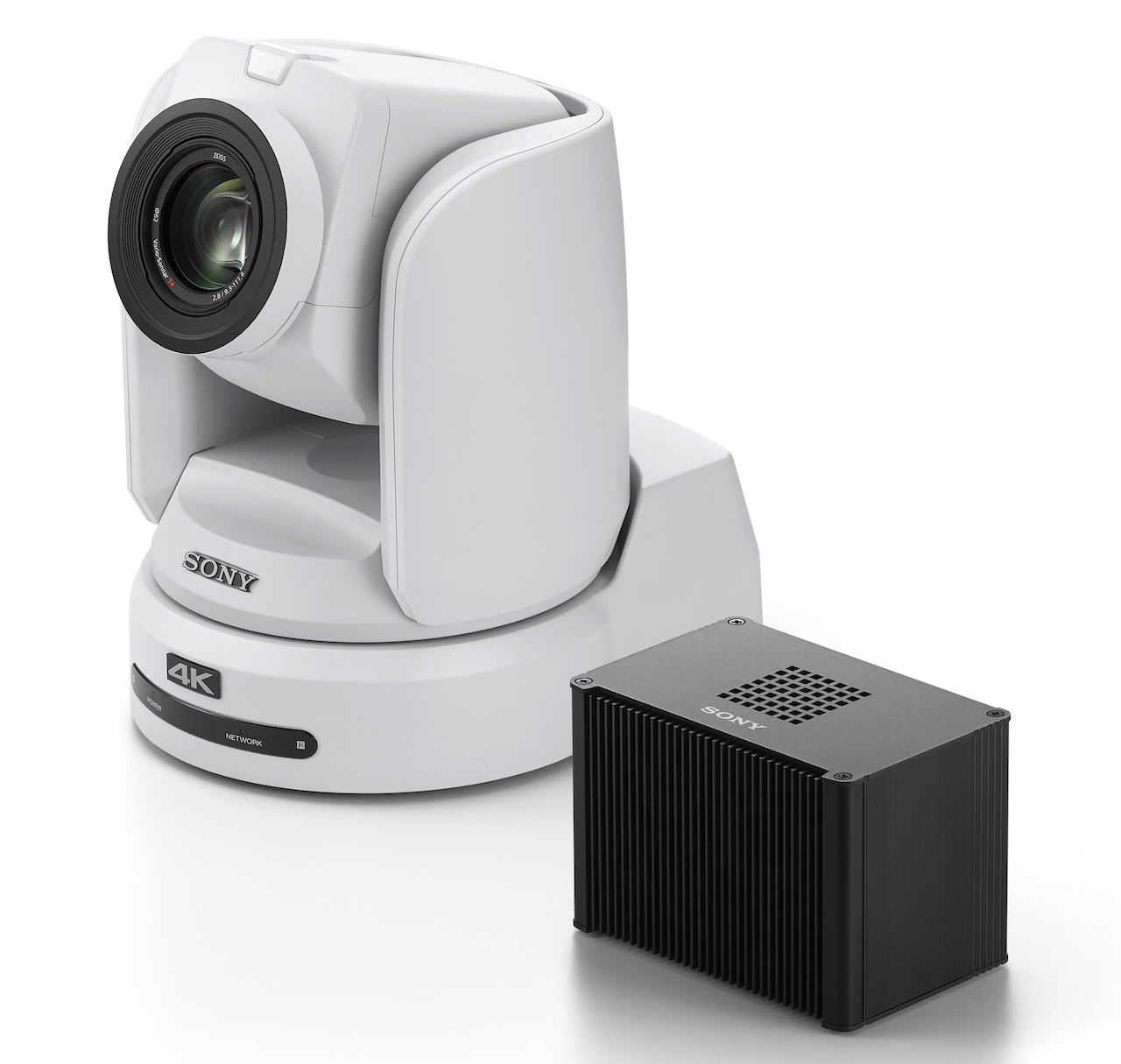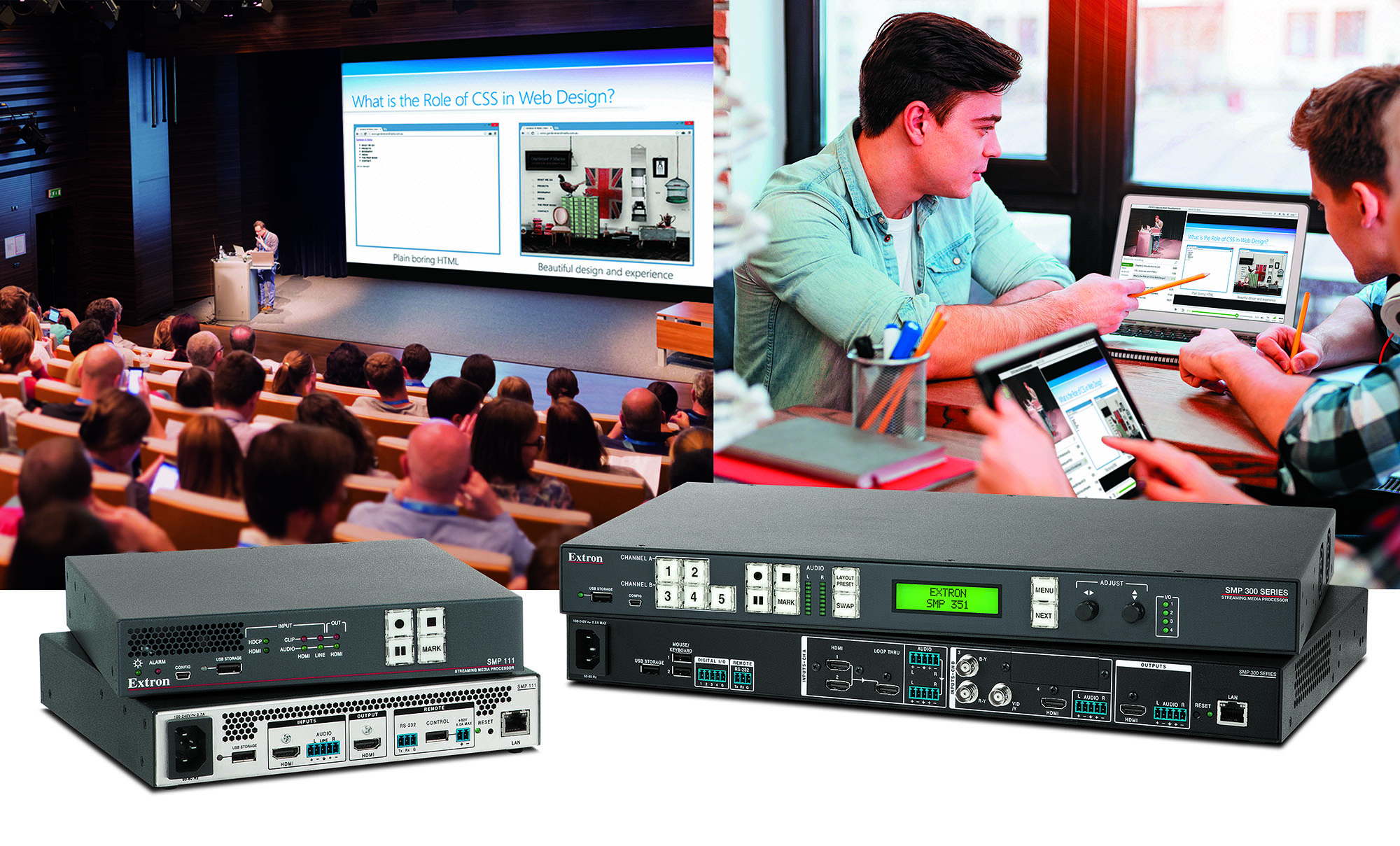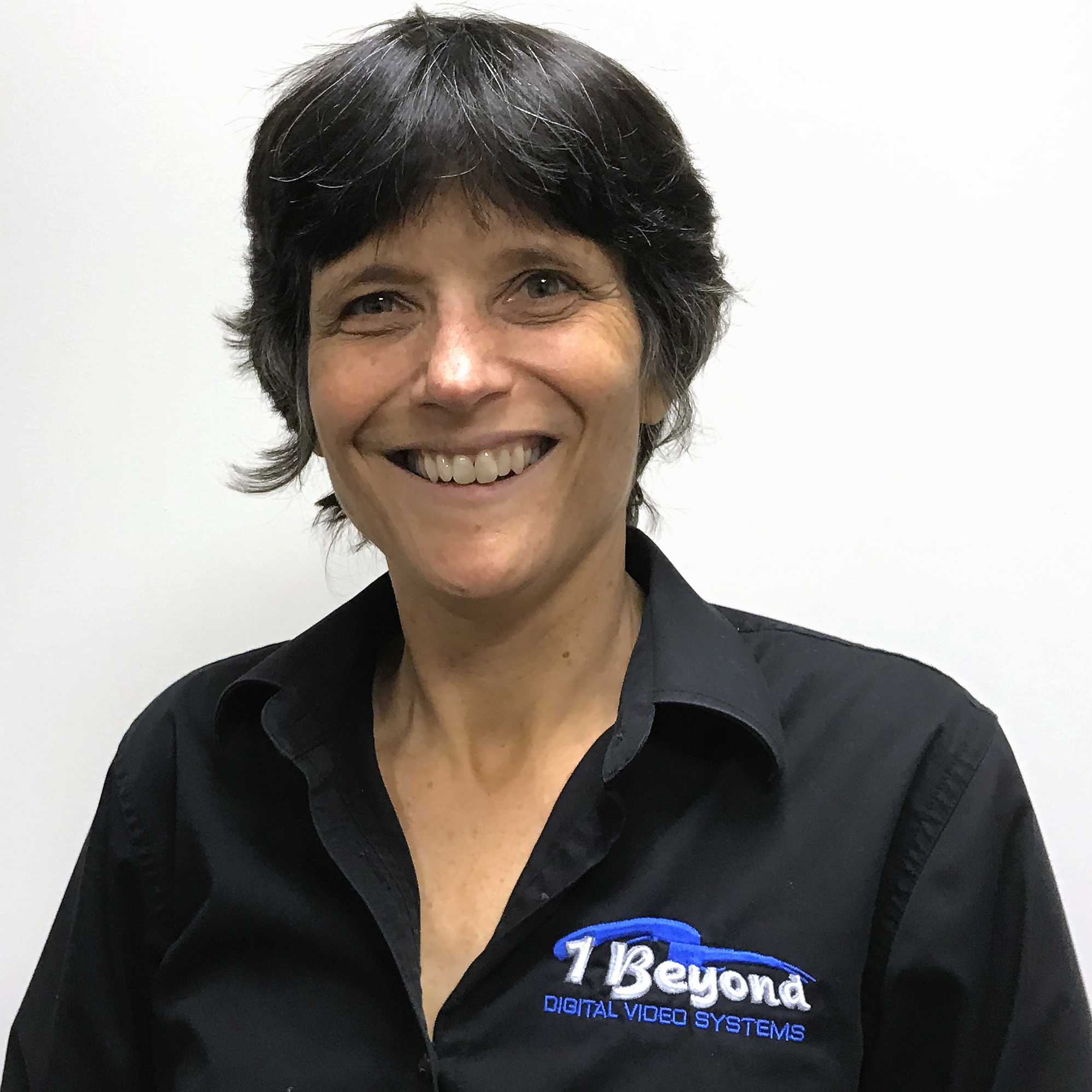A New Age of Video in the Classroom
Before March 2020, video was already being deployed widely in higher education classrooms for lecture capture and distance learning applications. In the midst of the COVID-19 pandemic, videoconferencing became the primary mode of communication.
The Chronicle of Higher Education is tracking colleges and universities’ plans for reopening campuses in the fall. According to their research, as of July 1, 61 percent are planning for in-person classes, 22 percent are proposing a hybrid model, and only 8 percent are planning for online-only instruction. The remaining 8 percent are undecided.
As institutions of higher learning plan for the fall semester, we asked experts from four leading AV industry companies to share how each is providing solutions to help schools prepare.
Scroll through the gallery below to see the latest video products for the classroom.

Crestron Flex R-Series Plus
Crestron Flex R-Series Plus is a rapid deployment solution that brings collaboration wherever it’s needed, allowing organizations to equip any space with videoconferencing capabilities. The mobile UC system supports native Microsoft Teams or Zoom Rooms and BYOD conferencing. The Flex R-Series Plus features an intelligent camera with 150° field of vision that auto-frames participants, as well as a 360° quad-mic array with a 20-foot range and retractable Ethernet and power cables.

Sony Edge Analytics REA-C1000
Sony’s Edge Analytics solution, the REA-C1000, allows users to create video content in real time—without the need for specialized training, or additional staff or equipment. The compact and lightweight solution uses AI-based video analytics technology to automatically extract the object in focus and combine it with other images in real time. With its motion/face detection and color/shape recognition capabilities, the REA-C1000 is essentially a brain that can power any connected camera and AV setup.

Extron SMP Series
Extron SMP Series solutions simplify recording and streaming to connect students and employees to live or on-demand content anytime, anywhere, on any device. Robust, easy to use SMP Streaming Media Processors fit into any workflow for both ad-hoc and scheduled activities. Simply publish to a USB drive, network share, or video platform. The SMP integrates directly into video platforms like Kaltura, Panopto, and OpenCast and supports streaming to popular hosting platforms such as YouTube, Facebook Live, Vimeo, and more.

1 Beyond Automate VX Automatic Camera Switching Solution
1 Beyond’s Automate VX automatic camera switching solution allows cameras to be placed anywhere in a room and uses the room’s existing microphones to provide dynamic video for recording, live streaming, and videoconferencing with soft and hard codecs. Multiple sources—including cameras, content, and graphics—can be combined into a single layout. The system can control up to 10 cameras, including tracking cameras like the 1 Beyond AutoTracker camera, and integrates with popular DSPs from Shure, Biamp, and QSC.
All Eyes on the Speaker

Hands-on student participation and engagement are essential elements of the learning experience. For classes that involve interaction and discussion, remote students miss out if they’re not able to see who is speaking. “A multicamera solution is required, and one with automation so the best camera is selected to give a close-up of whoever is speaking,” said Rony Sebok, vice president at 1 Beyond. “This is what the 1 Beyond Automate VX solution does and why so many schools have already purchased it.”
1 Beyond’s AutoTracker camera smoothly and automatically follows a professor as they move around the room. This solution is designed to save money for users in several ways. It does not require a camera operator, the feed from the camera can go directly into a lecture capture system, and no additional hardware is needed.
“The immediate need is to provide as close to the in-person experience as possible for those students and faculty who cannot attend lectures in person,” said Sebok. “Tracking cameras and voice-activated switching provides this better than any single static camera shot can.”
A daily selection of the top stories for AV integrators, resellers and consultants. Sign up below.
Bring Your Own Videoconferencing

During COVID-19, even the best-laid plans can go awry. “They must be prepared to transition to remote learning at a moment’s notice,” said John Hulen, national education director at Crestron. “While many institutions have already designed and installed systems that route AV within the classroom, now is the time schools will pivot to make software-based videoconferencing a part of this priority.”
[Sponsored: Crestron on Touchless Control Rooms]
To remain competitive, universities are adopting a hybrid learning model. Crestron offers bring-your-own-video-conferencing (BYOVC) solutions that allow users to transform any room into a modern educational space. “Crestron is responding to the evolving needs of the education market with the Crestron Flex R-Series mobile UC system,” said Hulen. “With Crestron Flex R-Series, universities will meet the increasing demands for videoconferencing without making drastic changes to their existing infrastructure.”
Voice control integration, wireless video presentation, and occupancy sensors can greatly reduce or eliminate the need for contact with high-touch surfaces, which is increasingly important during today’s health emergency. “Faculty can use voice commands to adjust the audio levels, change sources, and start and stop recordings within the classroom,” said Hulen. “Wireless presentation devices such as Crestron AirMedia give users a no-touch option to share video content. Whether implementing a new system or leveraging your existing equipment, minimizing interaction with technology can help lower health risks as people return to campus.”
In Sync

As classes return, capabilities such as asynchronous lecture capture and on-demand content sharing are needed. “At Extron, we have a broad array of customers who are in varying degrees of digital transformation, but with the pandemic, higher-ed institutions have had to scramble to rapidly implement new tools that enable students to learn remotely,” said Joe da Silva, director of product marketing at Extron. “With the understanding that virtual learning will continue for the foreseeable future, institutions quickly realized the need for a solution like the Extron SMP Series, which will record and stream lecture content, filling in the gaps that many real-time synchronous web conferencing systems don’t accommodate.”
[The Technology Manager's Guide to Distance Learning and Streaming]
The Extron SMP Streaming Media Processor brings powerful H.264 video capture capabilities that fit easily into any workflow for both ad-hoc and scheduled activities. Anyone, of any skill level, can quickly and easily create a high-quality recording and publish it to a USB drive, network share, or enterprise video platform, while simultaneously live streaming to a hosting service.
The SMP Series is a dedicated appliance purpose-built for online learning; it eliminates the need for separate scalers and the complexity that can come with PC capture solutions. Extron SMP online learning and virtual classroom streaming solutions build a framework for hybrid and virtual learning, and future-proof institutions to accommodate classroom recordings, live streaming, and active learning.
Increasing Production Value

“At its core, Sony Electronics is an imaging company, so we pride ourselves on providing flexible and impactful solutions with superior imagery that enhance learning experiences—whether virtual or in person,” said Mark Bonifacio, director, B2B business management at Sony Electronics, Imaging Products and Solutions Americas–Pro. “We’re seeing more screens in classrooms to add interactivity, as well as an increased reliance on video with higher production values.”
Implementing video in the classroom means capturing multiple angles, using different backdrops, showcasing written content and diagrams in addition to the presenter, and accommodating audience participation for two-way dialogues. “A presenter can do all of this using Sony’s Edge Analytics appliance and our PTZ cameras, which require fewer people to manage a production in this time of social distancing, and provide an enhanced learning experience that contributes to increased immersion and can lead to better retention,” said Bonifacio.
[Sponsored: Update on Sony's Large Display Strategy]
Audio is perhaps the most important piece of any communication. “Sony has released an IP-based Ceiling Beamforming Microphone that not only enables advanced speech reinforcement and clear recording, but provides two-way capture, which is ideal for distance teaching and learning,” said Bonifacio.

Cindy Davis is the brand and content director of AV Technology (AVT). She was a critical member of the AVT editorial team when the title won the “Best Media Brand” laurel in the 2018 SIIA Jesse H. Neal Awards. Davis moderates several monthly AV/IT roundtables and enjoys facilitating and engaging in deeper conversations about the complex topics shaping the ever-evolving AV/IT industry. She explores the ethos of collaboration, hybrid workplaces, experiential spaces, and artificial intelligence to share with readers. Previously, she developed the TechDecisions brand of content sites for EH Publishing, named one of the “10 Great Business Media Websites” by B2B Media Business magazine. For more than 25 years, Davis has developed and delivered multiplatform content for AV/IT B2B and consumer electronics B2C publications, associations, and companies. A lifelong New Englander, Davis makes time for coastal hikes with her husband, Gary, and their Vizsla rescue, Dixie, sailing on one of Gloucester’s great schooners and sampling local IPAs. Connect with her on LinkedIn.
